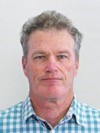
 |
Dr Nick McIvor MBChB, FRCS(Ed), FRACS Head and Neck/ Thyroid/ Parathyroid Surgeon, Auckland Regional Head and Neck Service, Auckland, NZ |
|
Dr
Nick McIvor is an Otolaryngologist/ Head & Neck Surgeon based at Auckland
City Hospital. For the last 26 years his
particular interests have been thyroid and parathyroid surgery and
septorhinoplasty. He has been the
Clinical Lead for the Head and Neck Tumour Stream for the National Standards Dr McIvor performs his own ultrasound examinations and biopsies according to the risk profile of individual nodules. He is on the faculty of the biennial Thyroid & Parathyroid Workshop in Brisbane. His surgical experience encompasses well over 1000 thyroidectomies and over 2000 septorhinoplasties, the latter including a large experience in rib grafts. Getting Noses Straight
The concept of nasal infrastructure (nasal bones, spine, septum, ULC's) and superstructure (LLC's, scrolls) will be presented. Nose are perceived as crooked due to asymmetries of infrastructure. Straightening a nose involves sequential steps starting with infrastructure: straight nasal bones, then nasal spine, then achieving a straight septum, then ensuring adequate and tapering dorsal width in conjunction with ULC's. Suprastructure is then suspended on infrastructure: first as symmetrical medial crura, then domes and lateral crura. Various osteotomies can achieve straight bones. The nasal spine can be straightened by drill modification. The technique of rim template septoplasty will be presented. Techniques to untwist the LLC discussed. The Superior Pole is Key to Thyroid Surgery Dissection of the superior thyroid pole involves dissection of thyroid tissue away from the external branch of the superior laryngeal nerve and the superior parathyroid gland and is an initial approach to the recurrent laryngeal nerve at the cricothyroid joint. An incision above the level of thyroid notch, if feasible, is preferred by the author as it affords the best exposure of this crucial area. The superior parathyroid is consistent in its positioning whereas the position and vascular pattern to the inferior gland is inconsistent. Preserving the integrity of the superior parathyroid gland with its blood supply is essential to minimise the risk of hypoparathyroidism as the inferior gland is more easily devascularized or excised. The medial approach to the superior pole frequently identifies the superior parathyroid with its feeding vessels. Careful dissection of the 'mesentery' to the superior pole will preserve these vessels. Using these techniques the author’s rate of permanent hypoparathyroidism is under 1%. |